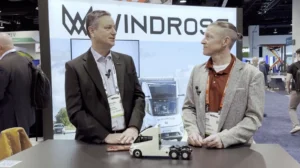Why Smart Cities Begin With Smart Lighting with Anil Agrawal of CIMCON Lighting
As technology has continued to grow, it’s started to touch every aspect of our lives. Not only do we have smart TVs on our walls and smartphones in our pockets, but now the cities where we live are getting smarter, too. As migration from rural to urban living has steadily increased, the need to create more efficient cities has grown. How can cities that are already large begin to accommodate even more growth?
The first step in answering that question is smart lighting, according to our guest on today’s podcast, Anil Agrawal, CEO of CIMCON Lighting. “Cities have to really learn how to become more efficient with the use of their resources,” Agrawal said. “That’s the reason they’re all talking about becoming smart.” One of the reasons why he believes cities should start with smart lighting is because it offers a good return on investment. “If you look at the typical city, 40 percent of the electricity spend goes towards powering street lights,” he said. “The solution that we have in terms of connected lighting can save them 20% on energy costs.”
Saving money isn’t the only incentive, though. Another benefit to smart lighting is that it helps protect the citizens that live, work, and play in a particular city. With smart lighting, the brightness can be raised in the case of an emergency to help alert first responders. “If you think about it, we have the ability as a company to influence the life of millions or even billions of people living in cities across the globe,” says Agrawal.
For the latest news, videos, and podcasts in the IoT Industry, be sure to subscribe to our industry publication.
Follow us on social media for the latest updates in B2B!
Twitter – @IOTMKSL
Facebook – facebook.com/marketscale
LinkedIn – linkedin.com/company/marketscale









